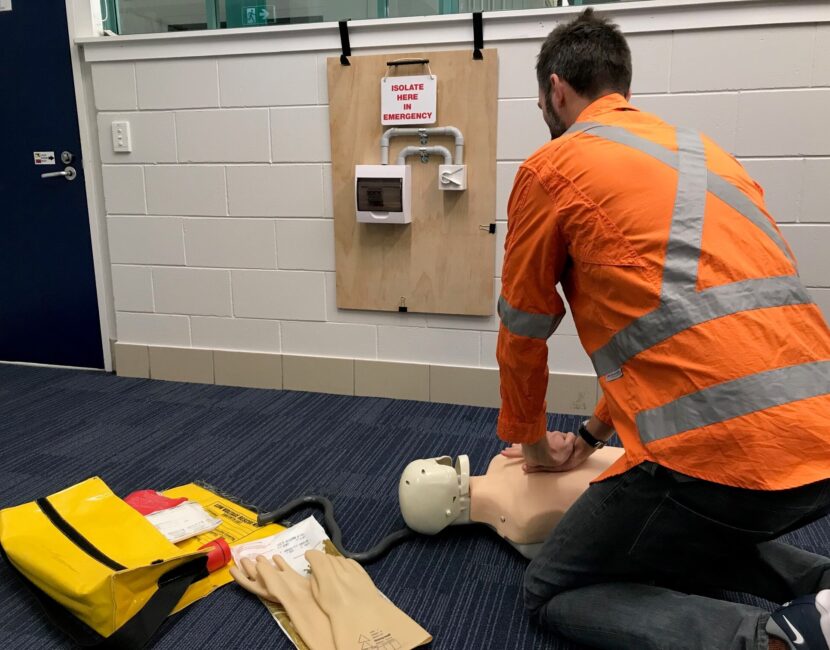Introduction
In today's busy office, making sure the security and health of your workforce is paramount. One facet that usually gets neglected is manual handling, which describes the process of training, lugging, pressing, or pulling things. In this post, we will certainly discover reliable hand-operated handling techniques that can help keep your workforce risk-free and healthy. We will additionally review the value of first aid training, consisting of CPR training and mental health emergency treatment, and how these elements contribute to a much safer work environment.
Manual Handling Techniques: Keeping Your Workforce Safe and Healthy
Manual handling methods are necessary for stopping injuries in the work environment. Incorrect lifting strategies can result in bone and joint problems (MSDs), which account for a significant variety of work environment injuries. To properly alleviate threats connected with manual handling, companies need to execute training programs that emphasize appropriate techniques.
Understanding Guidebook Managing Risks
Before diving into specific methods, it's essential to recognize the risks associated with manual handling jobs. According to research study, inadequate lifting methods can result in:
- Back pain Muscle strains Joint injuries Chronic conditions influencing mobility
Recognizing these dangers allows employers and employees alike to prioritize safety.
The Importance of Training
Training plays a necessary role in reducing manual handling-related injuries. It's not almost knowing just how to lift appropriately; it's likewise about comprehending body auto mechanics and ergonomics. A comprehensive manual handling training program ought to cover:
- Proper training techniques Risk analysis skills Use of tools like trolleys or forklifts
Additionally, including first aid courses into office training ensures that everyone knows exactly how to respond properly in situation of an injury.
Basic Lifting Techniques
Here are some foundational strategies that everyone need to master:
1. Assess the Load
- Before training anything, constantly assess its weight and shape. If it seems as well hefty or awkwardly shaped, look for help or use mechanical aids.
2. Positioning
- Stand near to the object. Place your feet shoulder-width apart for balance. Bend your knees while maintaining your back straight.
3. Grip
- Ensure a company grasp on the object. Use both hands when possible.
4. Lifting
- Lift with your legs rather than your back. Keep the things near to your body as you stand up.
5. Carrying
- Maintain a steady pose while walking. Avoid turning your body; rather, transform your entire body by relocating your feet.
6. Setting Down
- Lower the item by bending at the knees again. Ensure that you position it down carefully without dropping it.
Using Devices for Hand-operated Handling
Investing in tools developed for hand-operated handling can significantly lower https://firstaidworkplacetraining.com.au/ injury danger. Right here's firstaidpro.com.au a checklist of commonly used tools:
|Devices Type|Function|| ----------------|--------------------------------------|| Trolleys|For carrying heavy items|| Lifts|For lifting people or heavy things|| Pallet Jacks|For relocating palletized lots|
Incorporating Emergency treatment Training
While minimizing threats through appropriate manual handling is critical, being firstaidpro.com.au planned for emergencies is similarly essential. This is where emergency treatment training enters play.
Types of Emergency treatment Courses Available
General Workplace First Aid
- Covers standard first aid abilities required in various job environments.
CPR Training
- Teaches lifesaving cardiopulmonary resuscitation methods vital during heart emergencies.
Corporate Emergency treatment Training
- Tailored programs especially developed for company settings focusing on typical work environment injuries.
Mental Health and wellness First Aid
- Provides abilities to aid associates struggling with mental wellness problems-- an important part often neglected in traditional first aid courses.
Childcare Emergency treatment Course
- Focuses on replying to emergencies including children-- perfect for those working in instructional setups or childcare centers.
Online Emergency treatment Course

- Offers flexibility for staff members to learn at their own rate while still covering all required content.
Creating a Society of Safety
To preserve a setting conducive to safety and security, cultivating a culture where workers feel equipped to speak up regarding hazards is essential.

1. Encourage Open Communication
Encourage employees to report dangerous conditions without worry of revenge; this promotes an open discussion regarding prospective threats associated with manual handling tasks.
2. Regular Training Sessions
Hold normal workshops on hands-on handling methods and refreshers on emergency treatment courses-- keeping skills sharp ensures preparedness throughout emergencies.
3. Promote Psychological Well-being
Since psychological health plays an essential role in overall well-being, companies need to advertise mental health awareness along with physical safety and security measures.

FAQs
Q1: What are the indicators that I need manual handling training?
A1: If workers often lift heavy products or record pain after lifting tasks, it's time for thorough manual handling training sessions.
Q2: Just how commonly need to we carry out first aid training?
A2: Ideally, first aid training ought to happen annually; nevertheless, even more frequent sessions may be valuable based upon workplace risks or modifications in staff.
Q3: Can on-line training courses be as reliable as classroom-based training?
A3: Yes! Online programs have actually come to be progressively interactive and give valuable resources-- just guarantee they meet certification requirements!
Q4: What type of equipment should our office spend in?
A4: Invest in carts, raises, pallet jacks, and ergonomic furniture-- these tools assist lessen injury from inappropriate hands-on handling practices.
Conclusion
In conclusion, understanding correct hands-on handling techniques is vital for cultivating a secure and healthy and balanced workforce atmosphere. By prioritizing comprehensive training-- consisting of vital subjects like first aid courses-- you encourage employees with knowledge crucial for both avoidance and reaction throughout emergencies like mishaps associated with mishandled loads.
Remember: Safety isn't simply a policy; it's a culture built through constant initiative from every person within an organization!
By providing effective handbooks on these practices while emphasizing constant learning through certifications such as mouth-to-mouth resuscitation or Mental Health Emergency Treatment Courses-- companies can create offices where safety and security thrives!